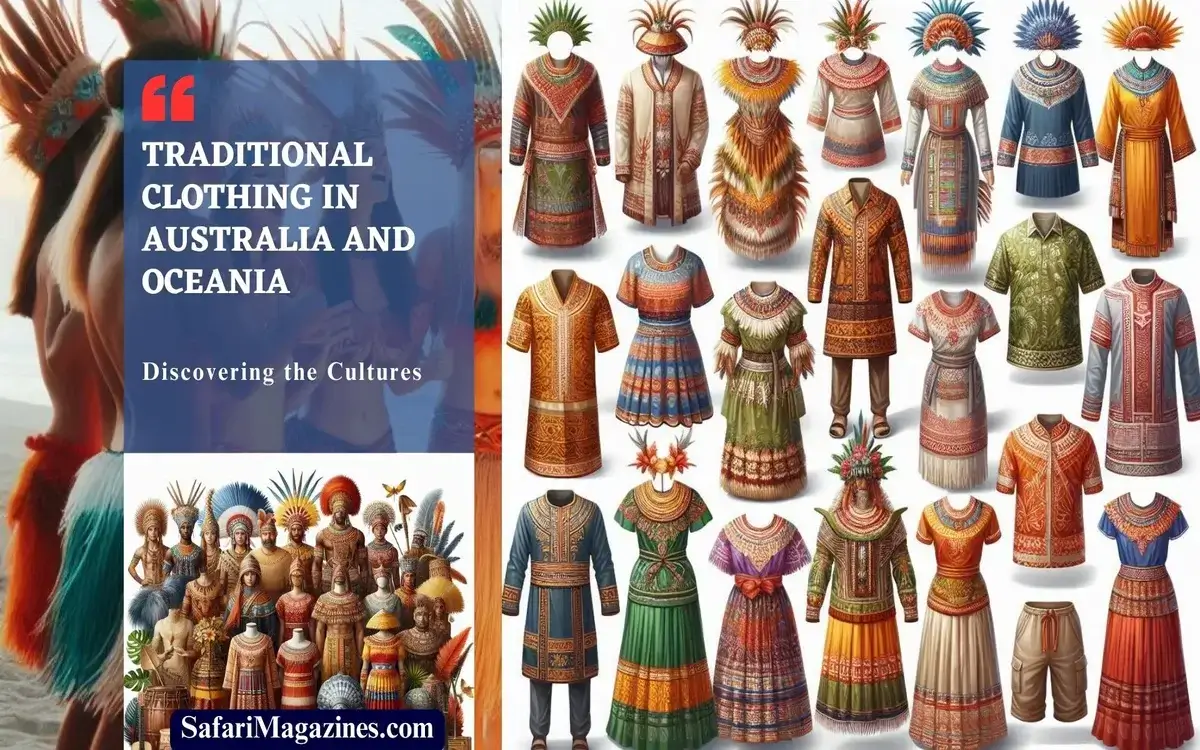
Traditional Clothing in Australia and Oceania. Oceania is the usual geographical name for the region consisting of Australia, New Zealand, Papua New Guinea, Polynesia, and Melanesia. It also includes thousands of islands spread across the Pacific Ocean. The people of these areas have rich cultural and traditional clothing. Traditional clothing in Oceania reflects the rich cultural heritage of its indigenous peoples, with each island nation has its own unique styles, materials, and motifs.
Table of Contents
ToggleImportance of Traditional Clothing in Oceania:
Traditional clothing in Oceania and Australia plays a central role in preserving cultural identity and heritage among indigenous communities. It embodies the values, beliefs and traditions of Pacific Island cultures. So, it serves as a visual expression of social status, spirituality and connection to land and sea. Australia Traditional clothes is one of the best Clothing Globally.
Popular Traditional Clothes in Australia and Oceania
Oceania, encompassing a vast expanse of islands and cultures, and features a rich tapestry of traditional attire.
Australia
Traditional Australian clothing varies among indigenous Aboriginal and Torres Strait Islander communities. The Aboriginal possum skin cloak, adorned with intricate designs, is worn during ceremonial occasions and rituals. Torres Strait Islander dancers wear elaborate costumes decorated with feathers and shells during cultural performances.
More Details of Australia‘s Traditional Clothing as Follows:
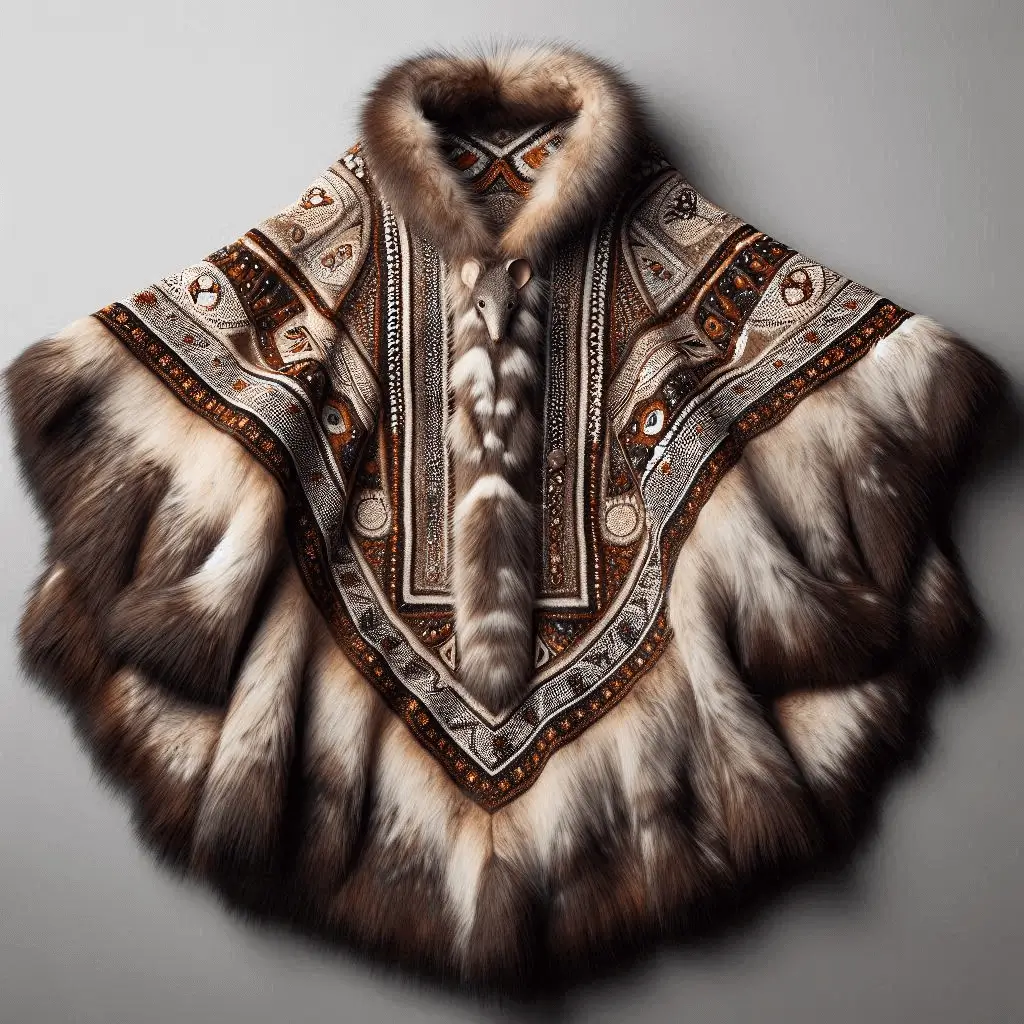
- Aboriginal Possum Skin Cloak: The Aboriginal possum skin cloak is a traditional garment. It worn by Indigenous Australians, particularly from the southeastern regions. It is made from possum skins that are sewn together with kangaroo sinew. It often adorned with intricate designs representing familial connections, stories, and cultural motifs. These cloaks serve ceremonial and practical purposes, providing warmth during cooler weather and symbolizing cultural identity and kinship.
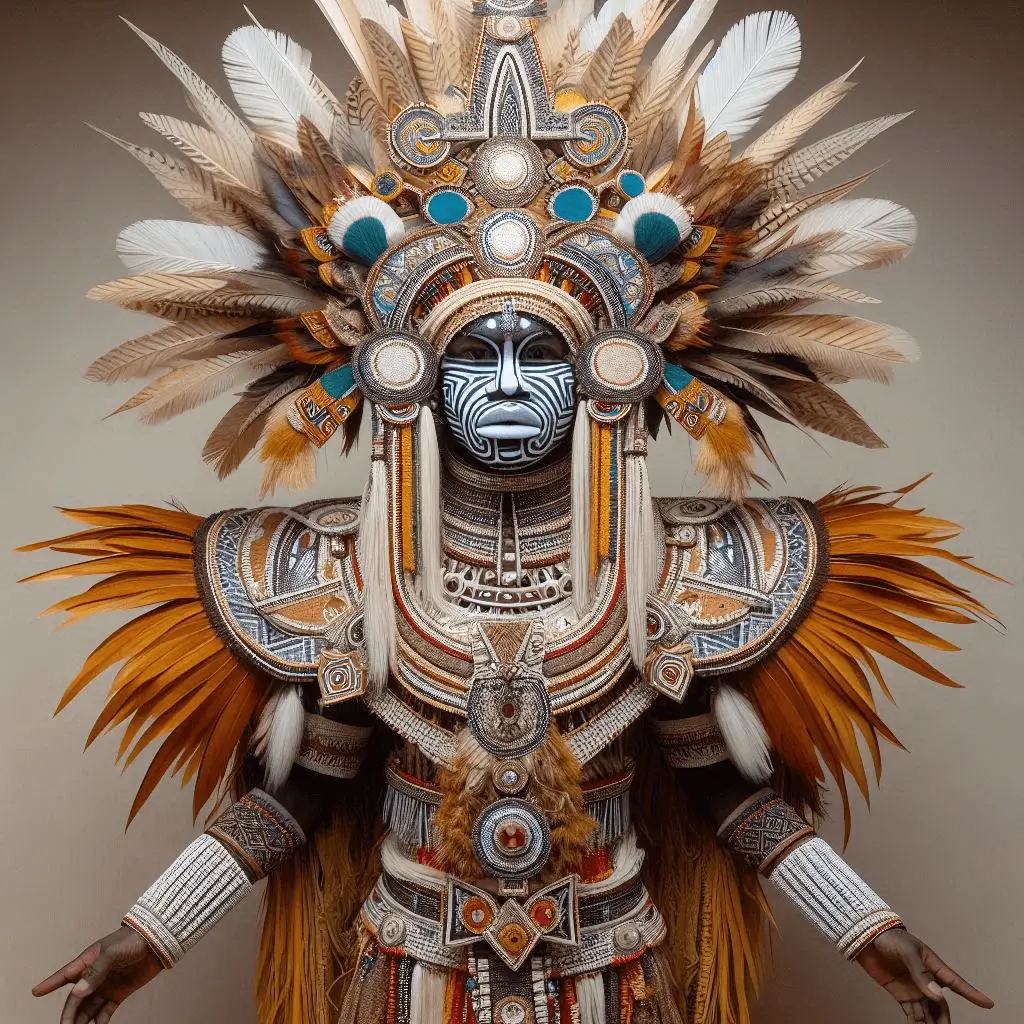
- Torres Strait Islander Dancer’s Costume: Torres Strait Islander dancers wear elaborate costumes during cultural performances and ceremonies. These costumes often include headdresses adorned with feathers, shells, and other natural materials, along with decorative necklaces, armbands, and anklets. The attire reflects the rich cultural heritage of the Torres Strait Islands and plays an important role in traditional dances and ritual.
Continue reading: Traditional Clothing in Australia and Oceania
Hawaii
Traditional Hawaiian clothing, such as the muumuu and aloha shirt, reflects the unique cultural heritage of the islands. Brightly colored fabrics adorned with floral motifs are characteristic of Hawaiian attire, evoking the beauty of the islands’ natural scenery. They often wear these traditional clothes during luaus, weddings, and other festive occasions.
More Details of Hawaii‘s Traditional Clothing as Follows:

- Muumuu: The muumuu is a traditional Hawaiian dress for women, characterized by its loose-fitting silhouette and floral prints. It is typically made from lightweight fabric such as cotton or rayon and is worn for casual occasions or as resort wear.
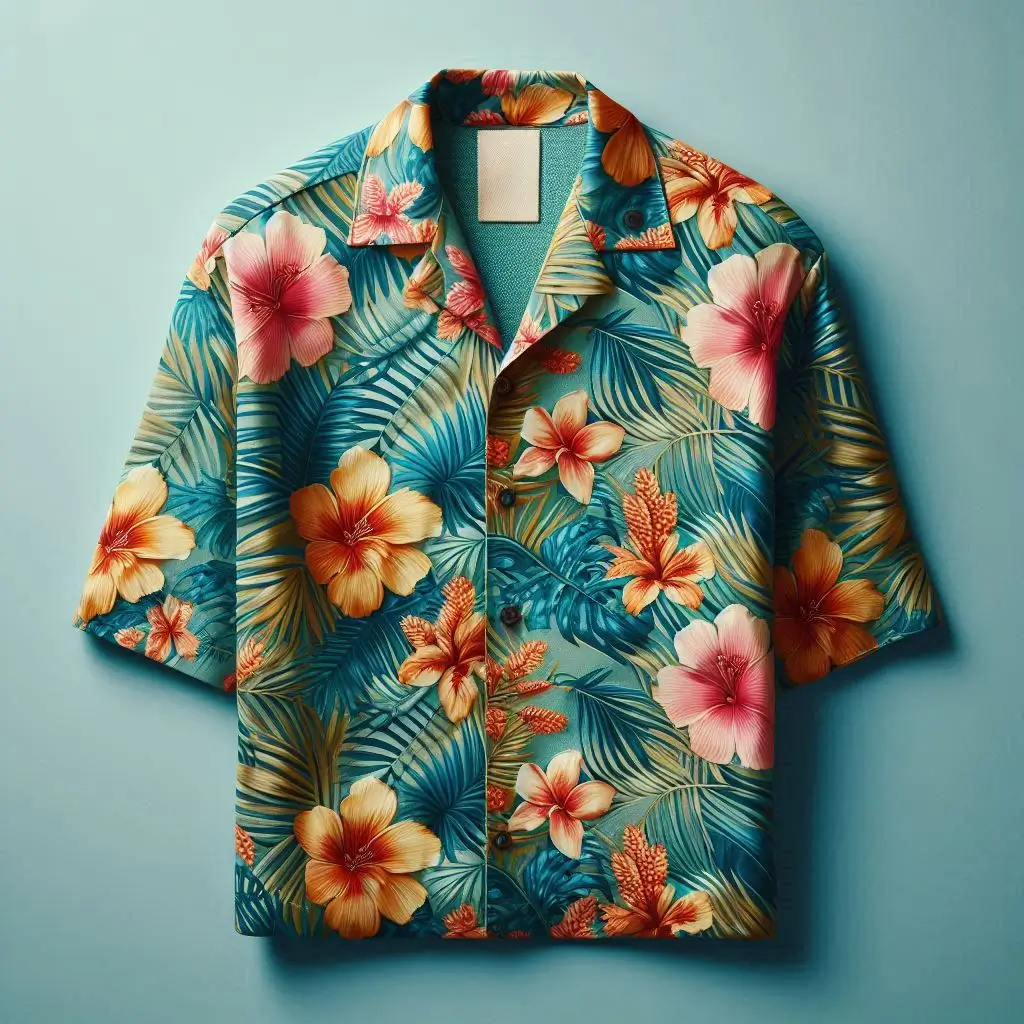
- Aloha Shirt: The aloha shirt is a traditional Hawaiian garment for men. Features colorful prints inspired by Hawaiian scenery, plants, and animals. It is typically made from lightweight fabric such as cotton or silk and is worn for casual occasions or as resort wear.
New Zealand (Aotearoa)
Traditional Maori clothing, known as korowai and piupiu, is a symbol of cultural identity and pride for the indigenous Maori people of New Zealand. The korowai, or woven cloak, is adorned with intricate designs that convey ancestral stories and connections to the land. They wear the piupiu, a flax skirt, during ceremonial dances and rituals.
More Details of New Zealand‘s Traditional Clothing as Follows:
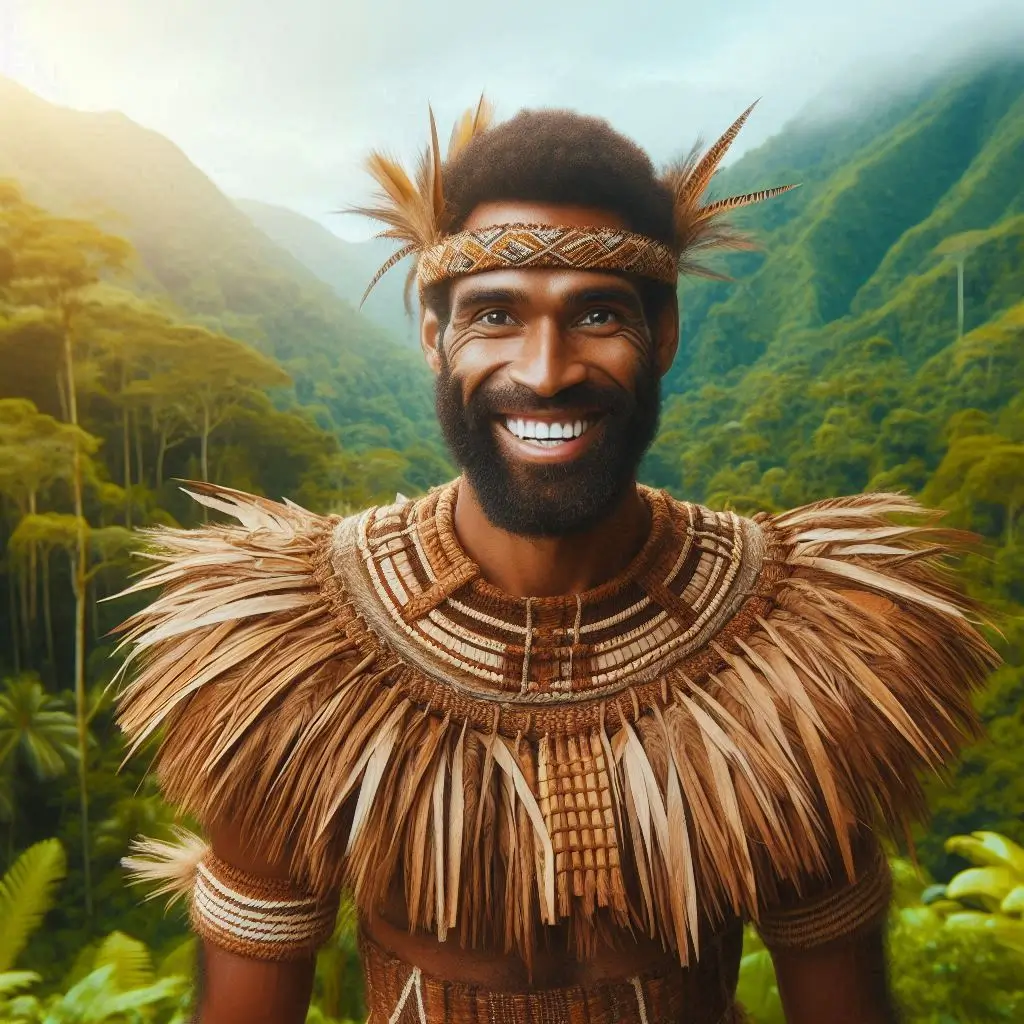
- Korowai: The korowai is a traditional Maori cloak made from feathers. It often adorned with intricate patterns and designs that hold cultural significance. It is worn as a symbol of prestige and is usually reserved for special occasions and ceremonies.
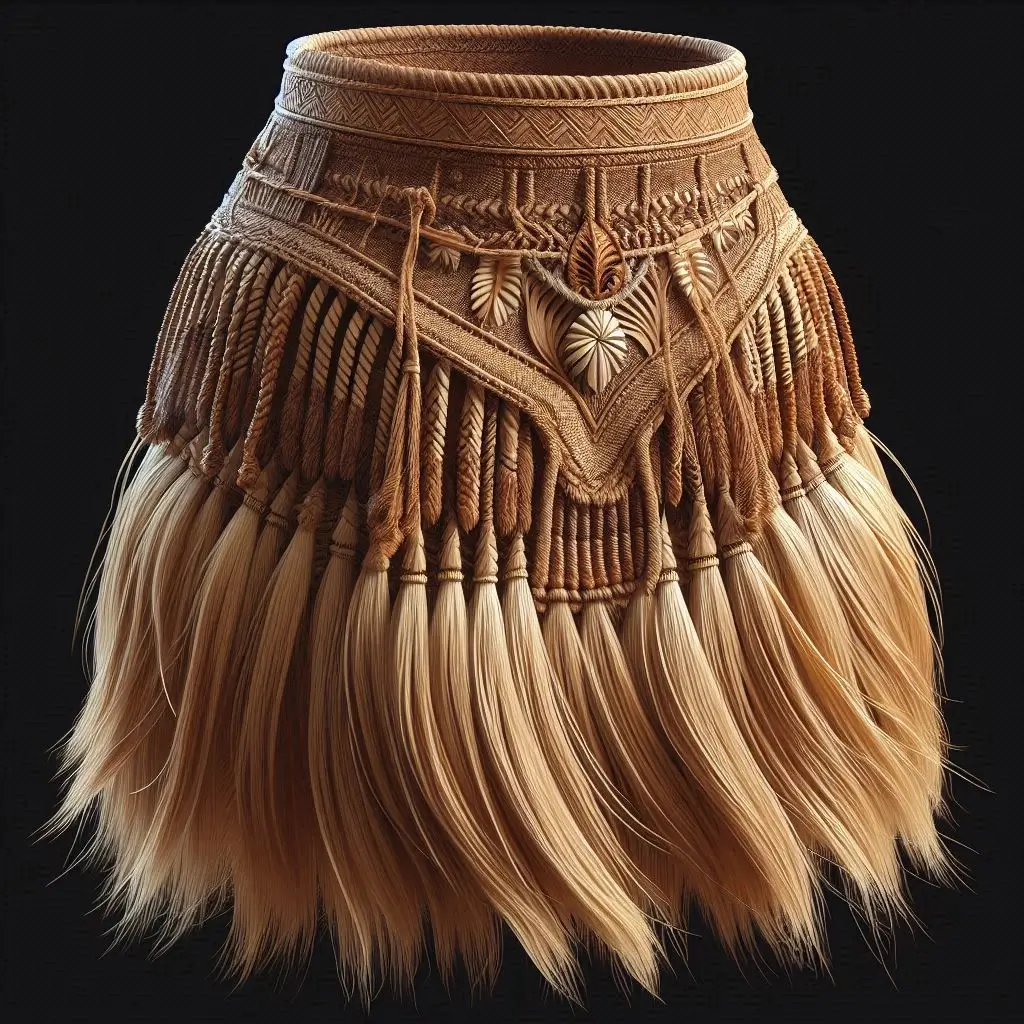
- Piupiu: The piupiu is a traditional Maori skirt made from flax fibers, often adorned with elaborate patterns and designs. It is worn by both men and women for ceremonial dances and rituals, with the rustling sound of the flax leaves adding to the rhythmic movements of the dance.
Continue reading: Traditional Clothing in Australia and Oceania
Samoa
Traditional Samoan clothing, such as the lavalava and puletasi, reflects the cultural traditions and values of the Samoan people. The lavalava, a length of fabric wrapped around the waist, is for both men and women as everyday attire. The puletasi, a two-piece dress, is often women’s wear for special occasions and cultural events.
More Details of Samoa‘s Traditional Clothing as Follows:
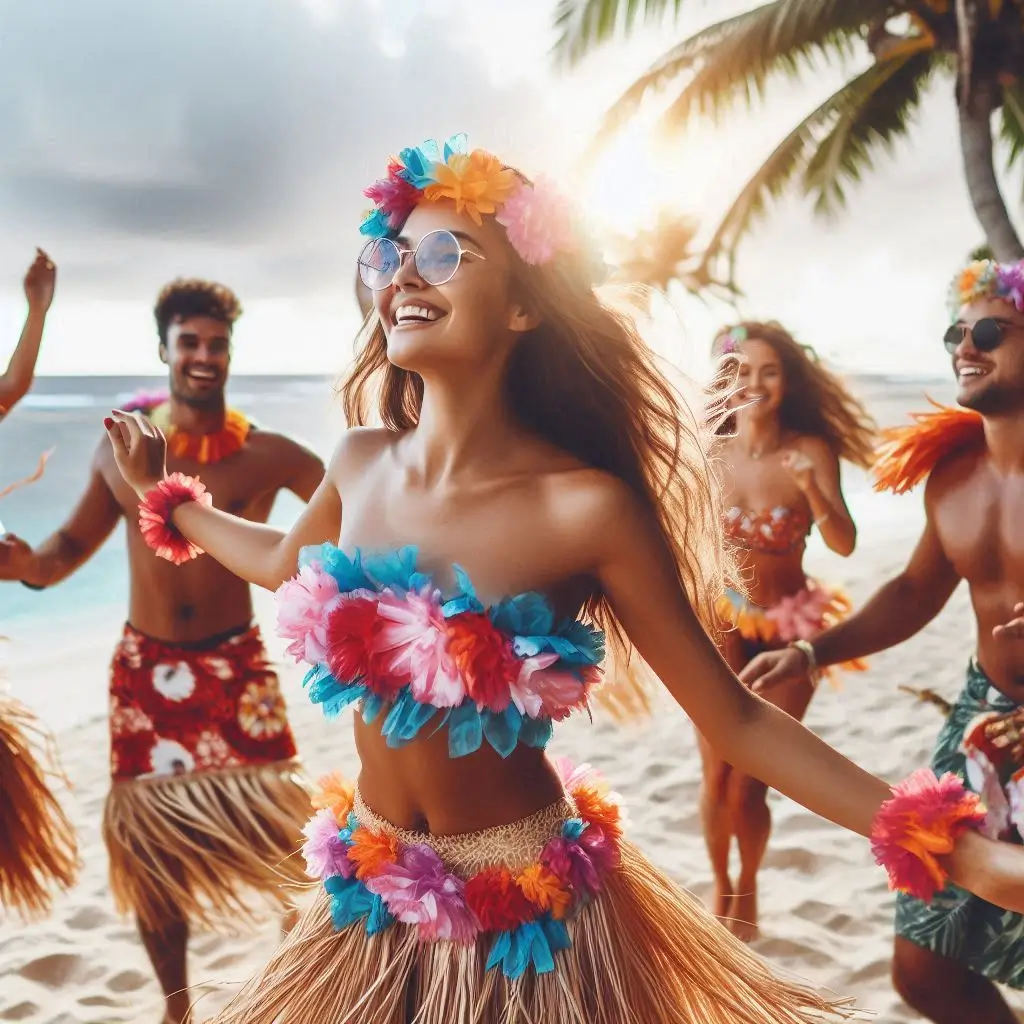
- Lavalava: The lavalava is a traditional Samoan garment for both men and women, typically made from a length of fabric wrapped around the waist. It is worn as everyday attire and is often made from brightly colored fabric with bold patterns and designs.
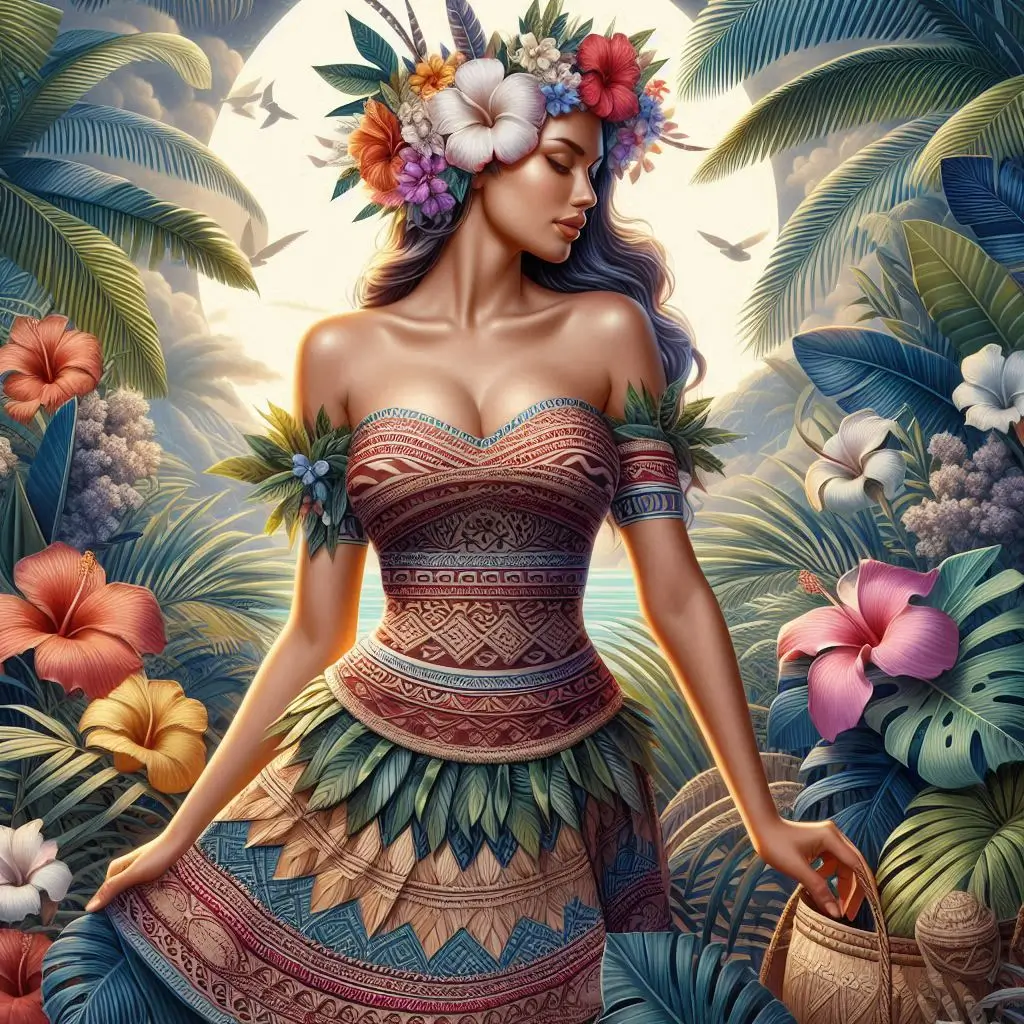
- Puletasi: The puletasi is a traditional Samoan dress for women, consisting of a long, loose-fitting tunic paired with a matching skirt. It is often made from brightly colored fabric with bold patterns and designs and is worn for special occasions such as weddings, church services, and cultural events.
Fiji
Traditional Fijian clothing, characterized by its bright colors and intricate designs, is an expression of Fijian culture and identity. The sulu, a wraparound skirt, is for both men and women as everyday attire. Traditional Fijian costumes, adorned with shells and feathers, are worn during ceremonial dances and rituals.
More Details of Fiji‘s Traditional Clothing as Follows:
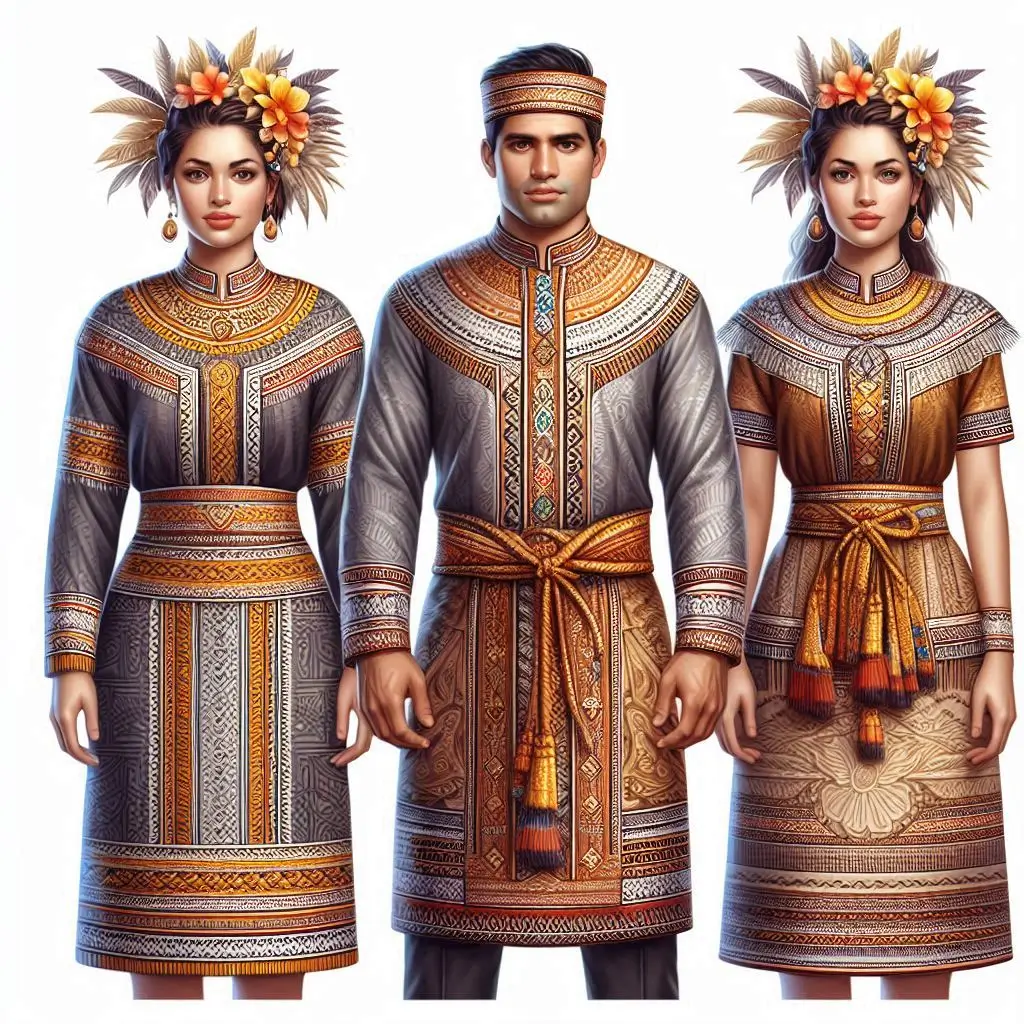
Sulu: The sulu is a traditional Fijian garment for both men and women, consisting of a wraparound skirt made from fabric with bold patterns and designs. It is typically worn as everyday attire and is often made from cotton or other lightweight fabrics for comfort in the tropical climate.
Continue reading: Traditional Clothing in Australia and Oceania
Tonga
Traditional Tongan clothing, such as the ta’ovala and tupenu, reflects the cultural heritage and social status of the Tongan people. The ta’ovala, a woven mat worn around the waist, is a symbol of respect and formality. The tupenu, a wraparound skirt, is for both men and women as everyday attire.
More Details of Tonga‘s Traditional Clothing as Follows:
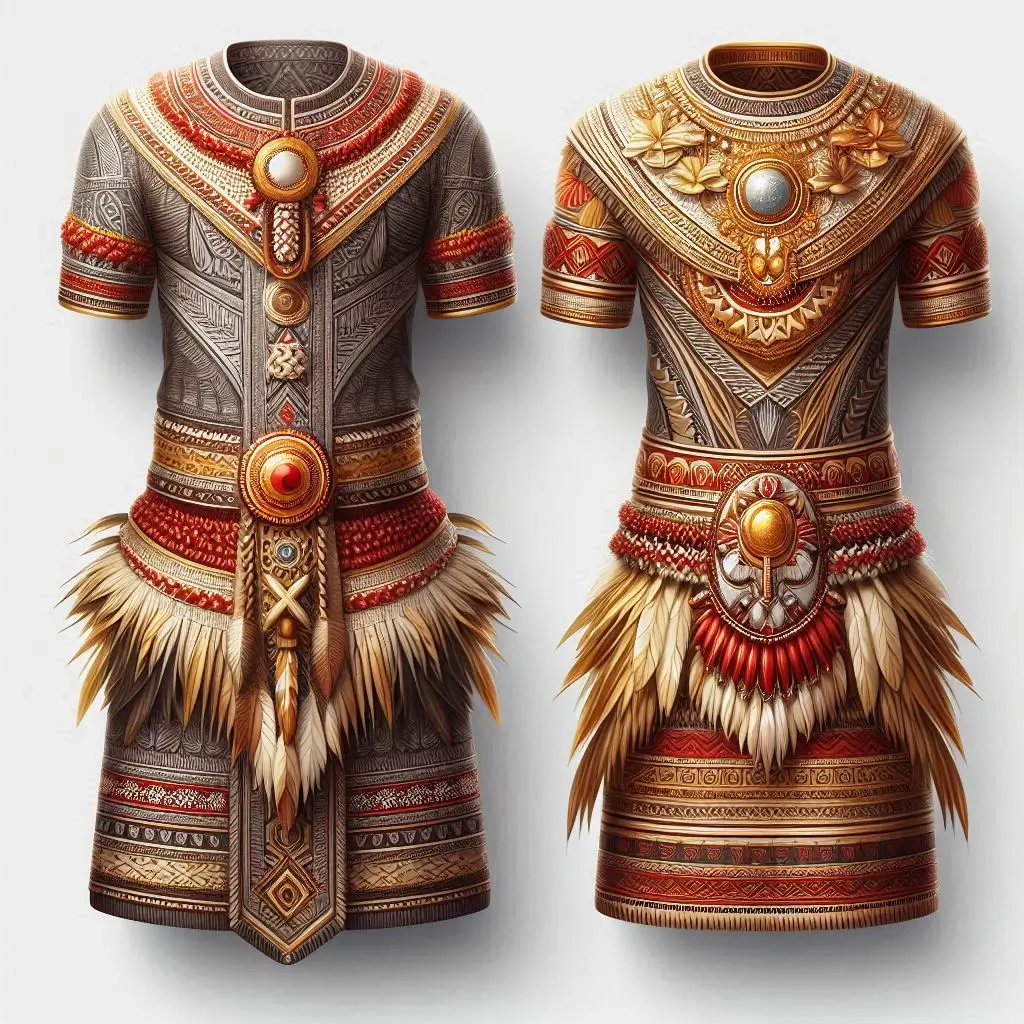
- Ta’ovala: The ta’ovala is a traditional Tongan garment for both men and women, typically made from woven mats worn around the waist. It is a symbol of respect and formality and is often worn for special occasions such as weddings, funerals, and royal ceremonies.
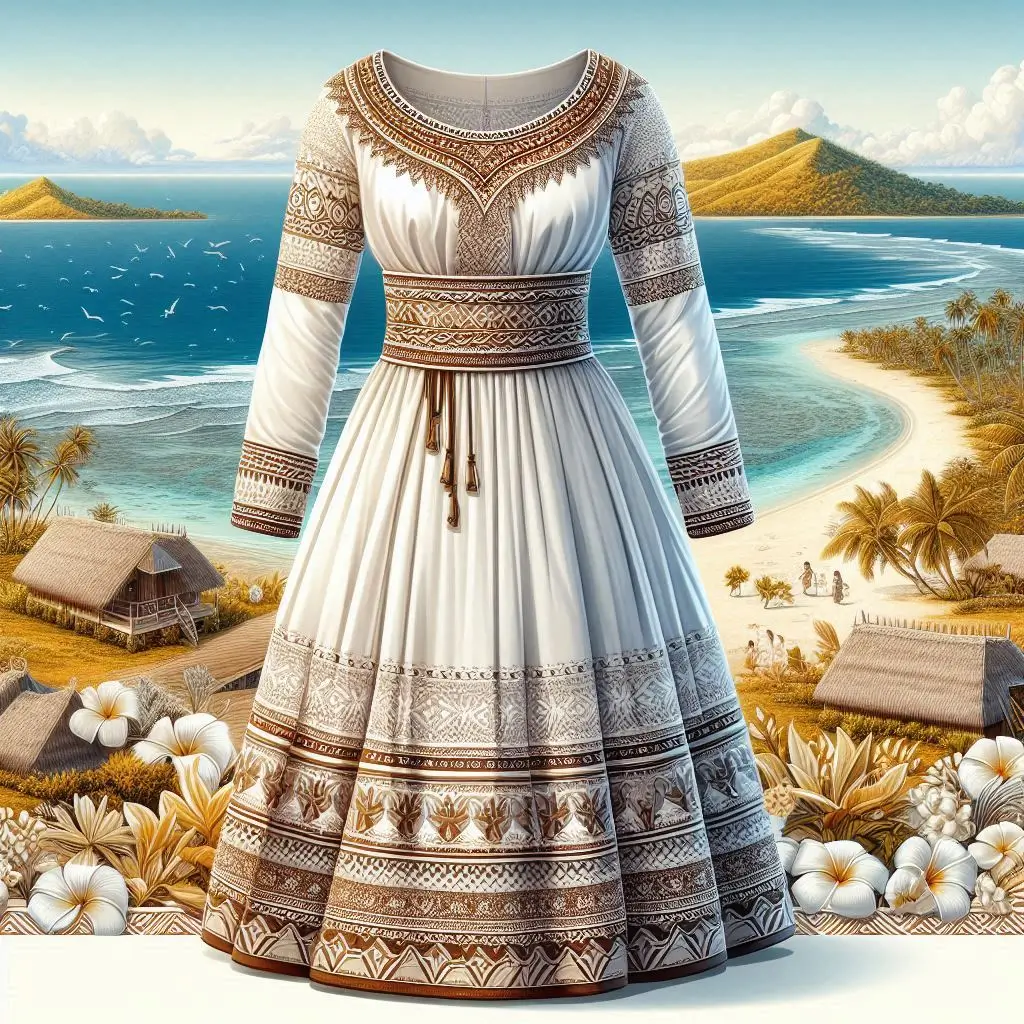
- Tupenu: The tupenu is a traditional Tongan garment for women, consisting of a wraparound skirt made from fabric with bold patterns and designs. It is typically worn as everyday attire and is often made from brightly colored fabric to reflect the culture of Tonga.
Papua New Guinea
Traditional Papua New Guinean clothing varies widely across the country’s diverse regions and cultures. The bilum, a woven bag, is an essential accessory carried by both men and women. Traditional headdresses, adorned with feathers and shells, are worn during ceremonial dances and rituals.
More Details of Papua New Guinea‘s Traditional Clothing as Follows:
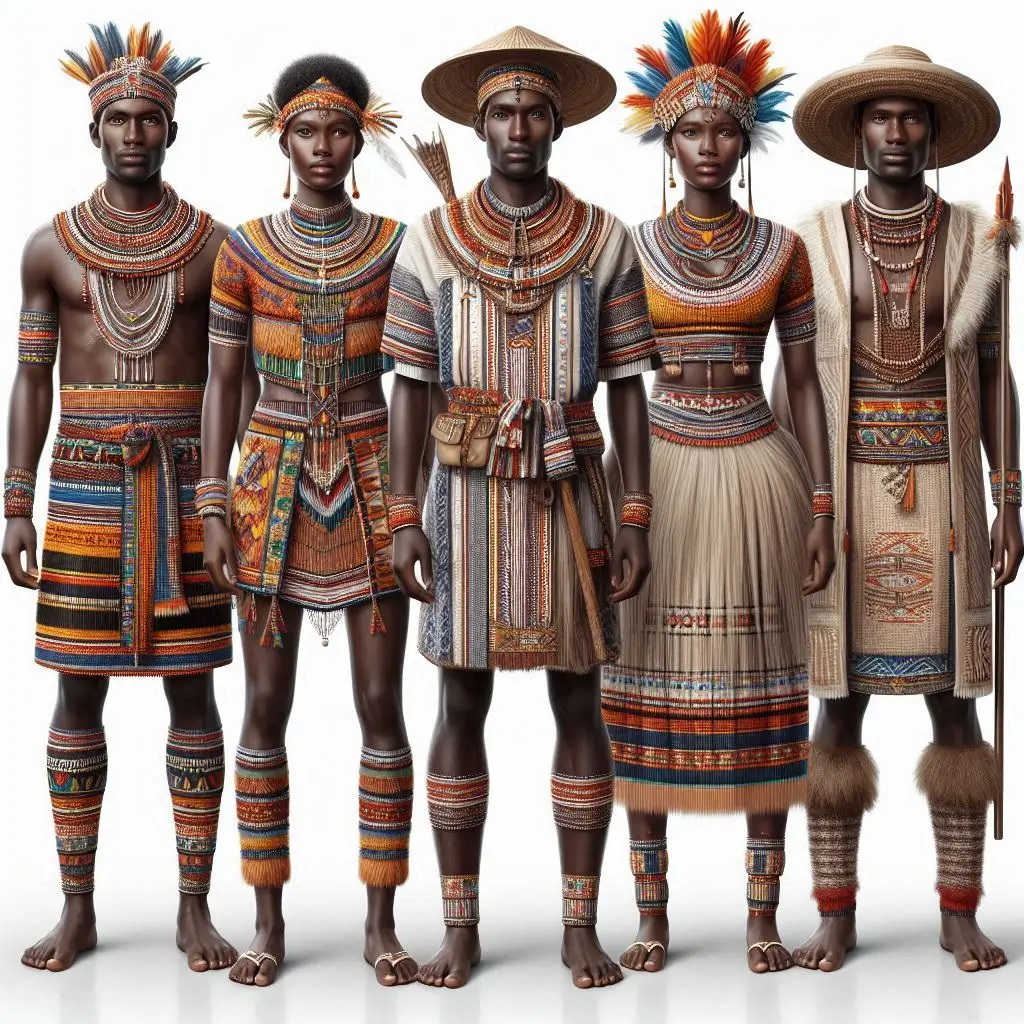
Bilum: The bilum is a traditional Papua New Guinean bag made from woven fibers, typically carried by both men and women. It is used to carry many items, including food, clothing, and personal belongings, and is often decorated with intricate patterns and designs.
Continue reading: Traditional Clothing in Australia and Oceania
French Polynesia
Traditional Tahitian clothing, such as the pareo and tifaifai, reflects the cultural traditions and values of French Polynesia. The pareo, a length of fabric wrapped around the body, is for both men and women as everyday attire. The tifaifai, a quilted bedspread, is adorned with intricate designs that symbolize Tahitian culture and heritage.
More Details of French Polynesia‘s Traditional Clothing as Follows:

Pareo: The pareo is a traditional Tahitian garment for both men and women, typically made from a length of fabric wrapped around the body. It is often adorned with bold patterns and designs inspired by Tahitian culture and is worn as everyday attire or for special occasions such as festivals and celebrations.
Continue reading: Traditional Clothing in Australia and Oceania
Solomon Islands
Traditional Solomon Island clothing, characterized by its natural materials and traditional techniques, is a reflection of the country’s cultural heritage. The laplap, a wraparound skirt made from woven pandanus leaves, is for both men and women as everyday attire. Traditional shell necklaces and bracelets are worn as accessories.
More Details of Solomon Islands‘s Traditional Clothing as Follows:
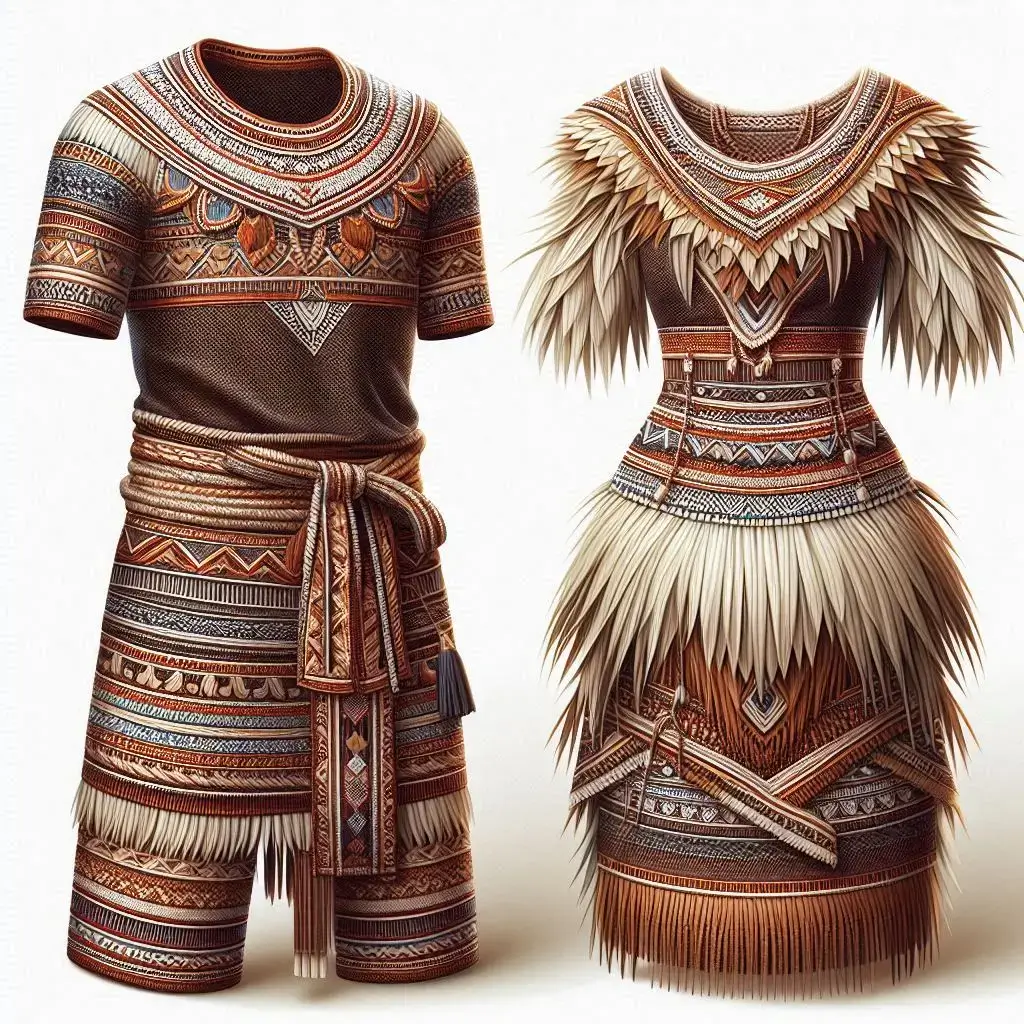
Laplap: The laplap is a traditional Solomon Island garment for both men and women, consisting of a wraparound skirt made from woven pandanus leaves. It is typically worn as everyday attire and is often adorned with shells or beads for decorative purposes.
Vanuatu
Traditional Vanuatuan clothing, such as the nambas and island dresses, reflects the cultural traditions and values of the indigenous ni-Vanuatu people. The nambas, a woven penis sheath, is for men as traditional attire. Island dresses, adorned with colorful patterns and designs, are for women for ceremonial dances and rituals.
More Details of Vanuatu‘s Traditional Clothing as Follows:
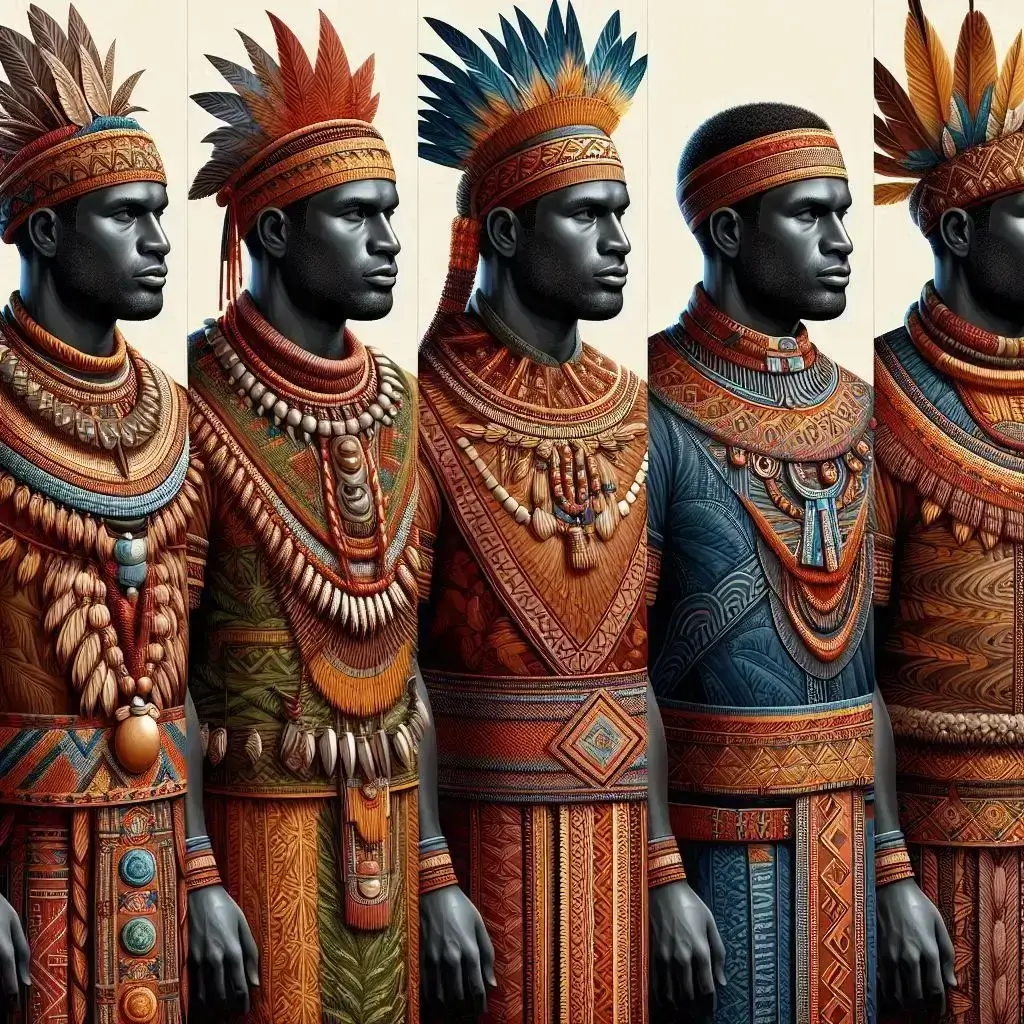
- Nambas: The nambas is a traditional Vanuatuan garment for men, typically made from a length of fabric wrapped around the waist. It is often worn as everyday attire and is typically made from natural materials such as woven fibers or plant leaves.
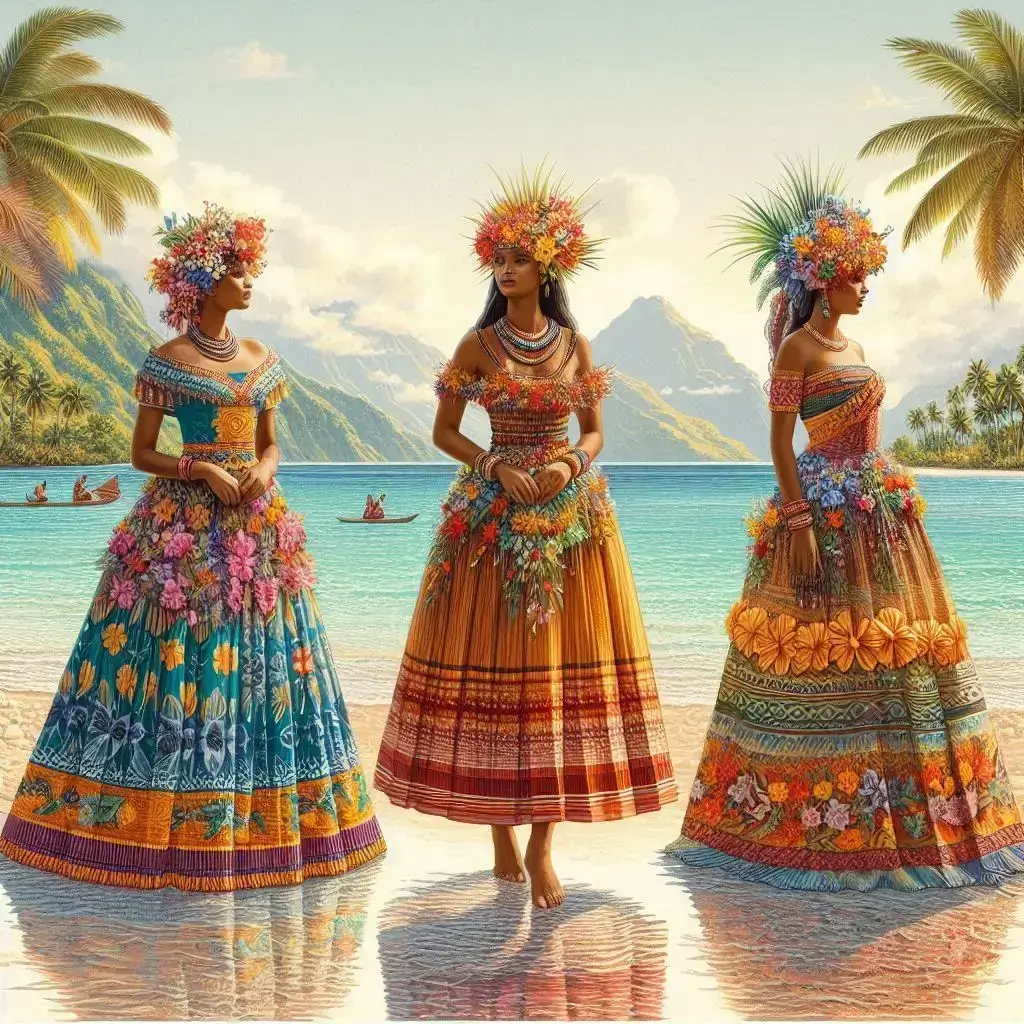
- Island Dresses: Island dresses are traditional Vanuatuan garments for women, typically made from fabric with bold patterns and designs. They are often worn for special occasions such as weddings, festivals, and cultural celebrations, and are typically adorned with shells or beads for decorative purposes.
Continue reading: Traditional Clothing in Australia and Oceania
Benefits of Traditional Clothing in Oceania:
Exploring the traditional clothing of Oceania and Australia offers insight into the cultures and histories of the peoples of the Pacific Islands. From the tapa cloth of Polynesia to the barkcloth garments of Melanesia, traditional attire in Oceania reflects the creativity, resourcefulness, and resilience of its indigenous communities.
Related topics:
- Traditional Taiwanese Clothing
- Top 10 Best Museums in Egypt
- Africa’s Traditional Clothing
- Traditional Clothing in Asia
- Europe’s Traditional Clothing
- Traditional Clothing in the Americas
- Work and Residency Visa in Saudi Arabia Without Sponsor
Dance Worldwide, Sleep Tourism, Cultural Souvenirs
Frequently Asked Questions
Q1: What are some traditional clothing items unique to Oceania?
A1: Traditional clothing in Oceania includes items such as the grass skirt in Hawaii, the tapa cloth in Fiji, and the feathered cloaks worn by indigenous peoples of New Zealand.
Q2: How do Pacific Island cultures preserve and pass down traditional clothing traditions?
A2: Pacific Island cultures preserve traditional clothing traditions through oral history, intergenerational knowledge sharing, and practical skill development in weaving, dyeing, and garment construction.
Q3: What role does traditional clothing play in cultural ceremonies and rituals in Oceania?
A3: Traditional clothing is often worn during important cultural ceremonies and rituals in Oceania, symbolizing cultural identity, spiritual beliefs, and social status within indigenous communities.
Q4: How has globalization impacted traditional clothing in Oceania?
A4: Globalization has led to changes in traditional clothing practices in Oceania, with some communities adopting Western-style attire while others actively work to preserve and revitalize traditional garments.
Q5: Can I participate in cultural festivals and events in Oceania wearing traditional clothing?
A5: Many cultural festivals and events in Oceania welcome participants wearing traditional clothing, celebrating diversity and cultural exchange. However, it’s essential to approach wearing traditional attire respectfully and with an understanding of its cultural significance.
